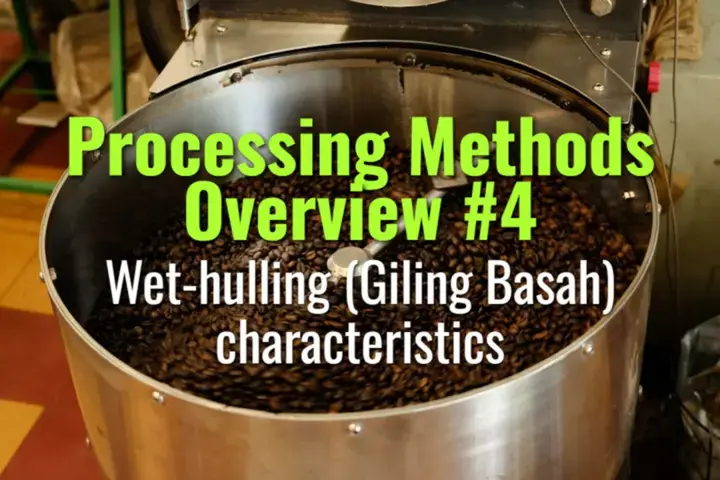Wet-hulling (Giling Basah) characteristics
This topic introduces the wet-hulling (Giling Basah) method, a unique coffee processing style from Indonesia, explaining its steps, flavor characteristics, and market significance.
- Coffee Basics Nerds
- 2 min read
Article 4 of 12 in Processing Methods Overview/

What is Wet-Hulling?
- Definition: Known locally as Giling Basah, it is a semi-washed method common in Indonesia (Sumatra, Sulawesi, parts of Java).
- Distinctive step: Beans are hulled while still semi-wet (30–40% moisture), unlike washed/natural methods where hulling happens after full drying (10–12% moisture).
Processing Steps
- Pulping: Fresh cherries pulped to remove skin.
- Fermentation (brief): Beans kept overnight to loosen mucilage.
- Partial drying: Beans dried only to ~30–40% moisture.
- Wet hulling: Parchment removed mechanically while beans are still wet and soft.
- Final drying: Beans dried further to exportable moisture (10–12%).
Flavor Characteristics
- Distinctive cup profile:
- Earthy, herbal, spicy notes.
- Low acidity, heavy body.
- Complex but sometimes inconsistent.
- Unique bluish-green raw bean color, different from washed or natural.
Advantages
- Faster processing in humid, rainy climates where full drying is difficult.
- Enables smallholders to sell semi-processed beans earlier for cash flow.
- Produces unique flavor identity prized in certain markets.
Challenges
- Higher risk of defects (uneven drying, mold, inconsistency).
- Cup profiles can be polarizing—some value the earthy complexity, others see it as a defect.
- Difficult to standardize quality across many smallholder farms.
Regional and Market Context
- Central to Indonesia’s coffee identity, especially Sumatran Mandheling, Lintong, and Gayo coffees.
- Specialty buyers seek it for distinctive cup profiles not found elsewhere.
Lasting Importance
Wet-hulling (Giling Basah) is a regionally unique adaptation to Indonesia’s humid climate. While it sacrifices some consistency, it delivers bold, earthy flavors that define Indonesian coffee’s global reputation.